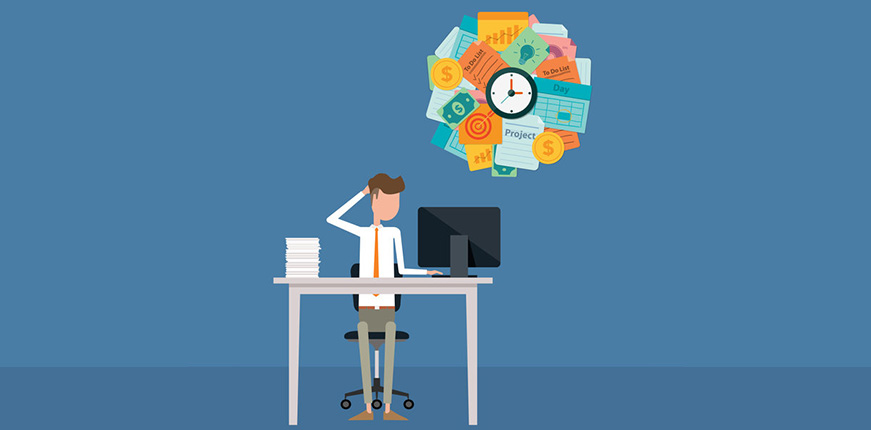What happens when you just have too much to do? Typical advice is to prioritize. One way to prioritze is to invest and schedule your time where you get the best return on your investment of time and energy. Imagine it the same as ROI for financial investment. Ask yourself – if I invest my time and energy now what is the payback I will get in the future?
What is the payback on the time and energy you are investing?
Today there are more devices, technology, automation and robots than ever before, yet we seem to busier and busier. The predicted utopia of labour saving devices leading to us working fewer hours has not happened. Instead we live in an even more busy world. 74% of managers say they have more responsibilities than previously, and 65% report having to deliver results faster. 80% of employees report their workload has increased over the last 3 years (CEB report).
The challenge today is not how to manage your time but your attention and energy. Your energy and attention is limited but we are constantly bombarded by distractions. In this series of tips I’ve looked at how you can maintain improve your attention and focus to be in discovery brain mode through managing stress, sleeping well and exercising. Then the next tips were about how to create headspace through single-tasking, setting boundaries, doing a brain dump and aligning your work to your circadian rhythm.
But what happens when you just have too much to do?
One way to think about what to do is to invest and schedule your time where you get the best return on your investment of time and energy. Imagine it the same as ROI for financial investment.
Ask yourself – if I invest my time and energy now what is the payback I will get in the future?

For example, I had to prepare my monthly report including some graphs and information from a database with a less than user friendly reporting tool. So I found it easier to simply do a data dump and manipulate it all in excel, taking 2-3 hours per month. I knew there had to be a better way and after finding a colleague who was an Excel whizz, he showed me a couple of clever tricks and set up a macro saving me at least two hours. All together it took about 2 hours of investment to charm my colleague and learn the tricks. So the investment of 2 hours, saved me 2 hours per month or 24 hours per year, a ROI on time and energy of 110%.
I don’t seriously suggest that you do an ROI calculation every time you think about a task or activity. But it’s a good way to think about what is the important, future focused work that has an impact, not just get buried in the urgent tasks. Are there things that you could automate or delegate that will take time now to set-up, learn or teach someone, but it have a good ROI for your time and energy?
Once you’ve decided what is going to give you the best ROI for your time and energy, the schedule these important tasks into your diary, otherwise they won’t happen. This video is an analogy of how scheduling important tasks will help you to get done what matters.
So give yourself permission to block out two-three hours in your diary to stop all the distractions, turn off the email alert, switch off your phone and stop multitasking. Really focus on an important task. How do you feel after that? Energised, motivated?


